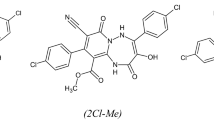Abstract
Steel is the most versatile engineering and construction material. Construction, power, automobiles, infrastructure, manufacturing and various different industrial sectors are using steel as their most important raw material. It is also the most recycled metal material on earth. But steel is having a major problem of rusting when exposed to water. Interaction of steel products with water is almost unavoidable in majority of the cases like automobiles, construction, water pipes, etc. Thus a detailed atomistic study of steel with water is required to understand the corrosion behaviour. At the atomic scale, Fe, Cr, and Ni are the major alloying elements of steel and highly reactive with water which results in corrosion and degradation of both surface and bulk properties. Therefore, we have used reactive molecular dynamics simulation (RMDS) to investigate reactivity of water with Fe–Cr–Ni substrate. We have carried out large number of simulations at different initial conditions and found that water molecules split into H and OH. Further, OH predominantly reacts with Cr and forms chromium oxide compounds over the Fe–Cr–Ni substrate. In the next step, variation in potential energy and mean square displacement have been used for quantitative characterization of reaction between water and Fe–Cr–Ni substrate. This study can provide detailed perspective towards the corrosion behaviour of steel in humid environment.




Similar content being viewed by others
References
Sherif E S M, Almajid A A, Khalil K A, Junaedi H, and Latief F H, Int. J. Electrochem. Sci. 8 (2013) 9360.
Gardner L, and Ashraf M, Eng. Struct. 28 (2006) 926.
Xiao Z, Huang Y, Liu Z, Hu W, Wang Q, and Hu C, Metals 12 (2022) 876.
Tisza M, and Czinege I, Int. J. Lightweight. Mater. Manuf. 1 (2018) 229.
Hansson C M, Metall. Mater. Trans. A 42 (2011) 2952.
Wong H S, Zhao Y X, Karimi A R, Buenfeld N R, and Jin W L, Corros. Sci. 52 (2010) 2469.
Sola E, Ožbolt J, Balabanić G, and Mir Z M, Cem. Concr. Res. 120 (2019) 119.
Kim Y S, and Kim J G, Metals 7 (2017) 182.
Zhao J, Liu Y, Yang X, He X, Wang L, Xiong D, and Gu Y, J. Wuhan Univ. Technol. Mater. Sci. Ed. 37 (2022) 677.
Van Duin A C, Bryantsev V S, Diallo M S, Goddard W A, Rahaman O, Doren D J, and Hermansson K, J. Phys. Chem. A 114 (2010) 9507.
Raymand D, van Duin A C, Spångberg D, Goddard W A III, and Hermansson K, Surf. Sci. 604 (2010) 741.
Dor Mohammadi H, Pang Q, Árnadóttir L, and Isgor O B, Comput. Mater. Sci. 145 (2018) 126.
Allen M P, and Tildesley D J, Computer Simulation of Liquids, Oxford University Press, Oxford (1989).
Rapaport D C, Blumberg R L, McKay S R, and Christian W, Comput. Phys. 10 (1996) 456.
Van Duin A C, Dasgupta S, Lorant F, and Goddard W A, J. Phys. Chem. A 105 (2001) 9396.
Hoover W G, Phys. Rev. A 31 (1985) 1695.
Evans D J, and Holian B L, J. Chem. Phys. 83 (1985) 4069.
Verlet L, Phys. Rev. 159 (1967) 98.
Plimpton S, J. Comput. Phys. 117 (1995) 1.
Stukowski A, Model. Simul. Mater. Sci. Eng. 18 (1), (2009) 015012.
Kumar S, Nandi S, Pattanayek S K, Madan M, Kaushik B, Kumar R, and Krishna K G, Mater. Chem. Phys. 308 (2023) 128242.
Dong B, Liu W, Chen L, Zhang T, Fan Y, Zhao Y, and Sun Y, Corros. Sci. 209 (2022) 110741.
Kumar S, and Sahu R K, Phys. Chem. Chem. Phys. 25 (2023) 13487.
Author information
Authors and Affiliations
Corresponding author
Additional information
Publisher's Note
Springer Nature remains neutral with regard to jurisdictional claims in published maps and institutional affiliations.
Rights and permissions
Springer Nature or its licensor (e.g. a society or other partner) holds exclusive rights to this article under a publishing agreement with the author(s) or other rightsholder(s); author self-archiving of the accepted manuscript version of this article is solely governed by the terms of such publishing agreement and applicable law.
About this article
Cite this article
Kumar, R., Kumar, S., Sahu, R.K. et al. Atomic Investigation of Corrosion Mechanism and Surface Degradation of Fe–Cr–Ni Alloy in Presence of Water: Advance Reactive Molecular Dynamics Simulation. Trans Indian Inst Met 77, 1355–1359 (2024). https://doi.org/10.1007/s12666-023-03181-z
Received:
Accepted:
Published:
Issue Date:
DOI: https://doi.org/10.1007/s12666-023-03181-z




